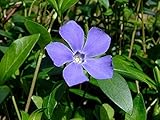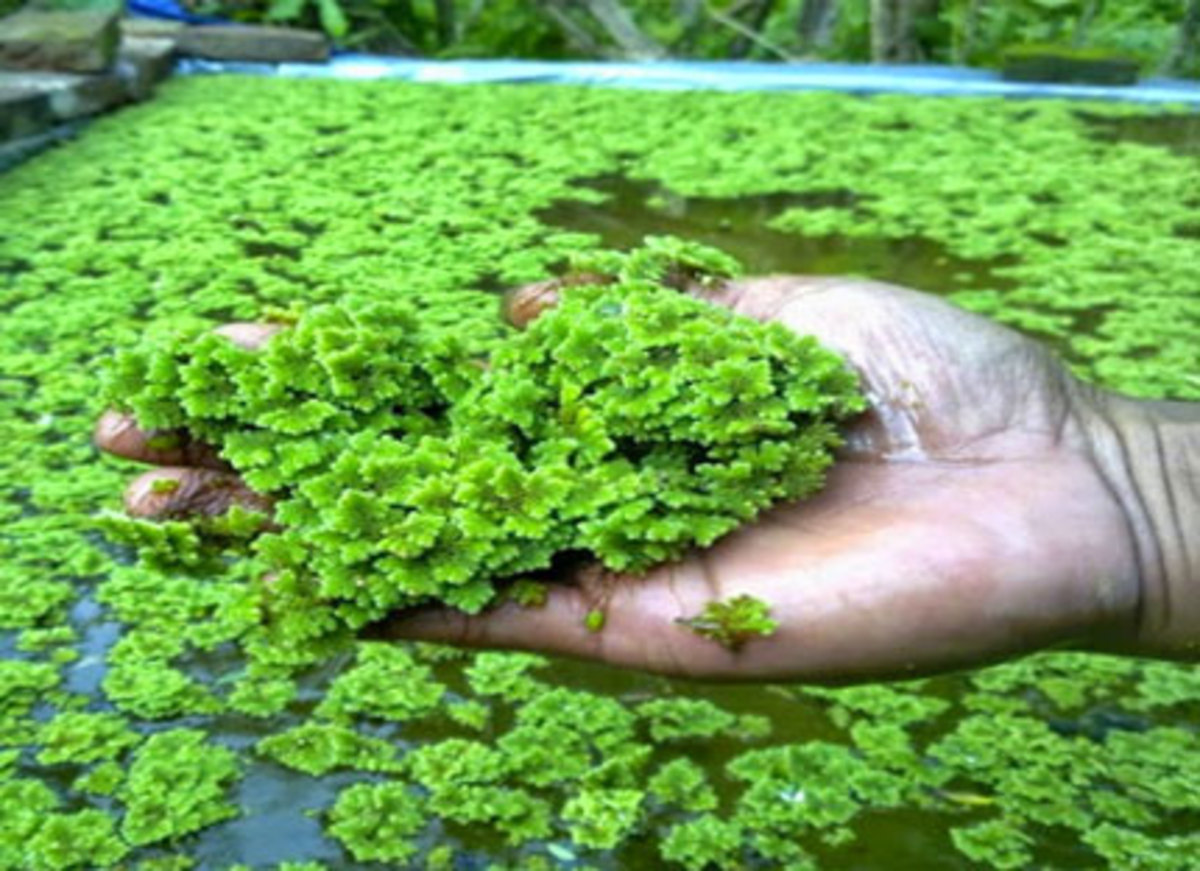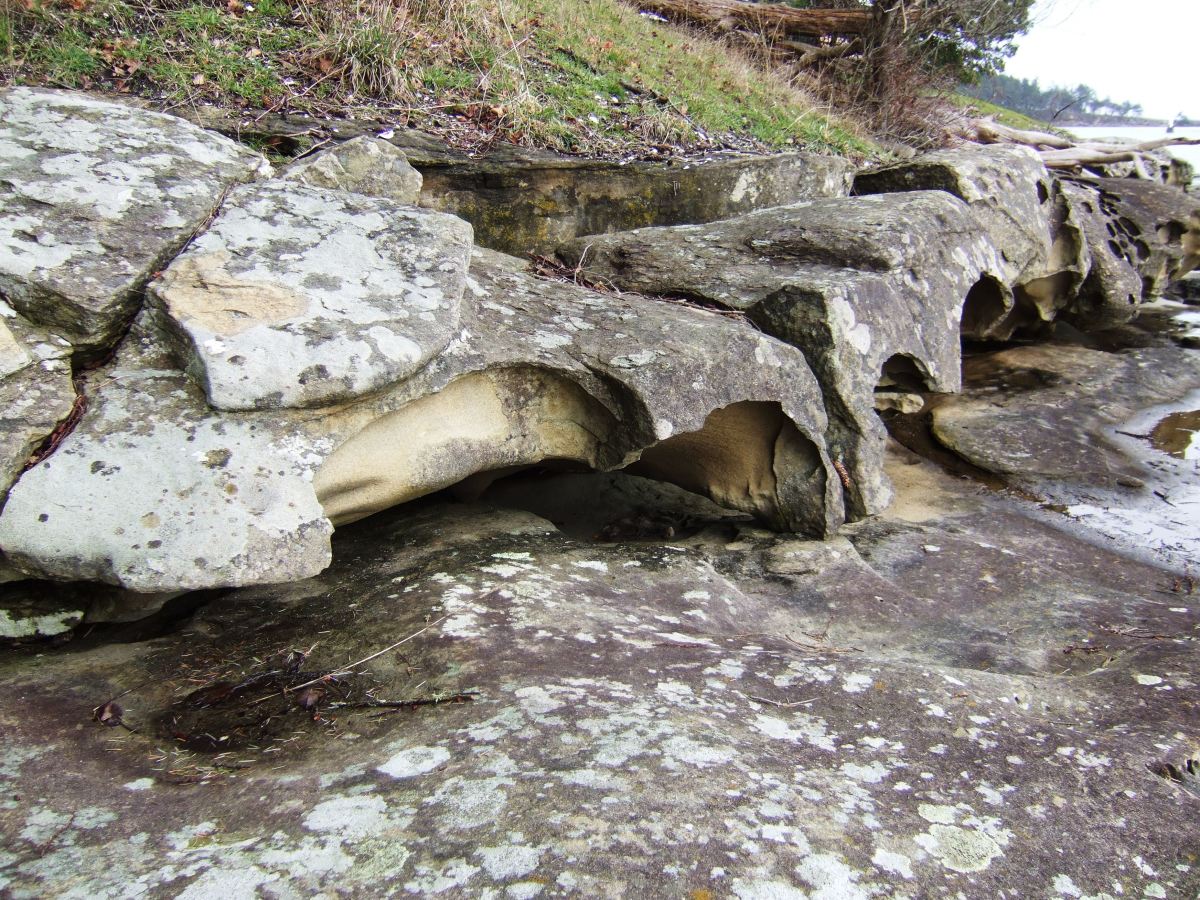Periwinkle
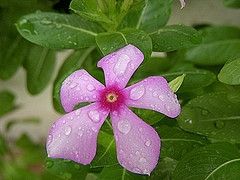
Periwinkle
Periwinkle is a perennial, evergreen in the dog bane family that was believed that it had been originally native to the island of Madagascar.
It has been widely cultivated for hundreds of years and can now be found growing wild in most warm regions of the world.
The plants grow one or two feet high, have glossy, dark green leaves (1-2 inches long) and flowers spring and all summer long.
The blooms of the natural wild plants are a pale pink with a purple "eye" in their centers, but horticulturists have developed varieties with colors ranging from white to hot pink to purple.
Here is some the history on Periwinkle
The plant was introduced in Europe during the mid-1700s during which time it was cultivated as an ornamental. Today it grows throughout much of the world and plantations have been established on most continents in the warmer climates.
Of the genus Vinca of the dog bane family (Apocynaceae). The name periwinkle is possibly taken from pervinka, the Russian name of the flower, which in turn is derived from pervi, "first," as it is one of the first flowers of spring. The lesser periwinkle (V. minor), with lilac-blue flowers, 2 cm (0.75 inch) across, an evergreen, trailing perennial, is native to Europe and is found in the British Isles. Introduced into North America, it is now widespread over much of the eastern continent. The similar greater periwinkle (V. major), with purplish blue flowers, 2.5 to 5 cm across, native to continental Europe, has become naturalized in England.
Periwinkle now grows all over the United States.
Walk In Beauty - By Brooke Medicine Eagle
I have made this video to help each person to remember to walk in beauty always. I find that when life has to much stress and you get down Walks in Beauty always helps me to feel more in balance and I started to get back to work with a song in my heart.
The song is from Gathering The Sacred Breath
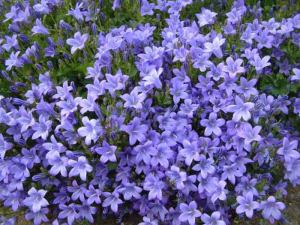
As A Ground Cover
Vinca minor L., common periwinkle, is a perennial evergreen ground cover that is winter hardy. It is closely related to the big leaf periwinkle (V. major L.), except in size and hardiness. Common periwinkle seldom exceeds a height of 6 inches although runners may trail long distances on the ground. The runners root at the node under moist conditions. The thick glossy leaves form a good ground cover. Small blue flowers occur indeterminately from April to September.
Required Growing Conditions
Common periwinkle is adapted to mild climates. It usually requires part shade and ample moisture, but will tolerate full sun if it is adequately watered. It is more hardy than big leaf periwinkle. Moisture and exposure are often more restrictive than soil type on determining adaptation. Common periwinkle is adapted to a wide range of soils. It is found on well drained to poorly drained soils that can be calcareous, alkaline to slightly acidic, and medium textured to fine textured. The plant should be used where there is adequate moisture.
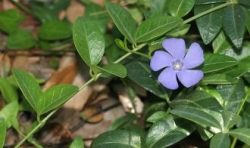
Spring Is Coming
First Flower
Today is Feb.16,2010 and here in Sonora, Ca. I have my first periwinkle flower and more to come. Yes spring is just around the corner .
But we all know that tell the nights are warmer we could get hit with more cold and snow so not time to replant your periwinkle.
I have my ground ready and have looked at were I need to cut back the periwinkle so as some as we get maybe passed April I'll not plant new periwinkle. This is a good time for you to started looking around your yard for new place to plant and get the ground ready. Have fun with the hope that spring is just around the corner.
For Periwinkle
Periwinkle is a great way to make your yard beautiful. Once you get periwinkle growing easy to transplant to other part of your yard.
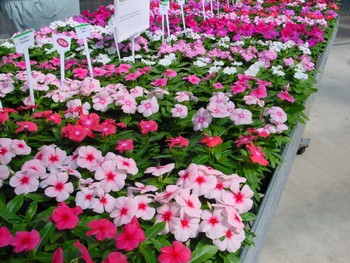
Periwinkle Gets Rain Gear With A New, Summer-Hardy Strain
By DOUG CALDWELL
I do love to see all the color that periwinkle comes in give you get ideas for mix up your flower beds.
Traditionally, periwinkles (Catharanthus roseus) are planted during the dry fall and winter periods because they can't tolerate wet feet and succumb to what Bob Cook refers to as the "stepped-on" diseases during the summer.
The most aggressive of these diseases has been the aerial phytophthora blight, which can wilt a bed of newly planted periwinkle in a matter of days. I spoke with Jim Pugh, manager at one of our largest bedding plant nurseries, American Farms. He joked about using these periwinkles as a summer annual: "I used to promise a written guarantee that they'd die within two weeks!"
However, there is some exciting news in the periwinkle world. After 10 years of research, Goldsmith Seeds, in Gilroy, Calif., has released this year (spring 2008) a patented, aerial-phytophthora-blight-resistant periwinkle (say that quickly 10 times!). It is called the Cora Series and is named in memory of Cora Van Wingerden. Many consider Cora the mother of modern U.S. greenhouse floriculture industry. Besides that, she is the mother of 16 children, with 15 active in the greenhouse-nursery industry today throughout the country.
Although Cora vinca is resistant to the key stepped-on disease, this is not to say that they aren't susceptible to the other genera of root-attacking pathogens, such as pythium, fusarium, rhizoctonia, etc. Developer Don Snow, with Goldsmith Seed, reported that in trials at Texas A&M, after a month of rain, the Cora vinca held up without fungicide applications. So it looks very promising as a spring-summer-fall annual. They may live longer. The leaves as well as the flowers are maybe 20 percent bigger than your average old-time periwinkle. Plus the leaves are glossy and also a darker green, making it a very attractive bedding plant.
There are six colors available now: white, lavender, deep lavender, apricot (with a red "eye"), burgundy and violet. Recent arrivals include a pink and punch (as in "Hawaiian") flowering varieties.

Deer Resistant Plant
My deer around my home eat the flowers , but can say they don't get into other planes to much. If a deer like your rose and flowers they find a way, periwinkle does slow them down just does not always stop them.
Hungry deer will eat anything (except perhaps barberry!), unless the plants or entire area is protected by a repellent. Each year seems to be a bit different...for example, we found them munching on purple coneflower (Echinacea) for the first time ever this year.
Note that trees will become deer resistant after growth exceeds browsing height (3' - 5')...a temporary fence around young trees, though unsightly, may be necessary for several years.
After being in the same house for over 10 years I have not seen any deer eating Periwinkle and I have a hill full of it.
Some people say periwinkle is a good deer resistant plant. I have seen them eat the flowers and yes make a bed in it. But not eat the green part of the plant so maybe it is a good deer resistant plant.
Now that winter is here and I have had snow yes some of my periwinkle has dried back, but I have a lot to take cuts from come this spring. I'm look at what part of my yard to add more periwinkle to. The one thing with winter is when the weather is warm I like to go out and started getting the new part of the yard ready. I have a lot of hill to work with. I know this is not the time of year to work in the yard, but it's nice to get some of the ground ready for spring.
Periwinkle - By Ehowgarden
Great information on periwinkle on this video.
I like to know the do's and don't's to a plant.
Hope you also enjoy it.
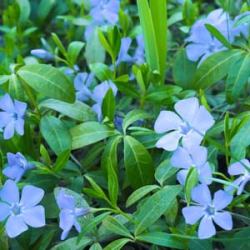
Where It Grows
I have a friend that lives in San Jose has a place in her yard and ask if she could have some of the periwinkle and now she is given to others. Just remember periwinkle likes rain and not to hot sun in the summer on them. Where I live we get snow and very hot summers the only place that my periwinkle dies back is were it get the west sun for a long time each day of summer.
Originated in Spain, France, and other areas of Europe but can now be found growing in many parts of the world.
While greater periwinkle is native to southern Europe.
Vinca major (commonly known as Large Periwinkle, Greater Periwinkle and Blue Periwinkle), is a flowering plant native to southern Europe, from Spain and southern France east to the western Balkans, and also in northeastern Turkey and the western Caucasus.
Periwinkle is native to North America, Europe, China and India. It is a semi woody evergreen perennial, and is known by three names: Vinca, Periwinkle (or Madagascar periwinkle), and Myrtle.
It is important to distinguish lesser and greater periwinkle from a close relative called Madagascar periwinkle. The Latin name for this herb is Catharanthus roseus, but it was formerly classified as Vinca rosea, and is still called by that name in some of the herbal literature. Another member of the dog bane family, this plant originated on the island of Madagascar but now grows in the southern United States and many other temperate regions of the world.
Growing Periwinkle Plants - Video
I have found this video to be helpful about planed periwinkle and how to make very planters.
I hope you to pick up some good things on care and planting for the video.
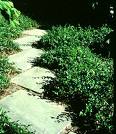
Fall Time
Take Care Of Periwinkle
Now that the hot summer has end. It's time to take a look around the yard at your periwinkle. This is a good time to remove plants that have taking over and plant some place else that needs a ground cover.
If your periwinkle is look dead time to cut back before wintertime.
Periwinkle likes to be cut back.
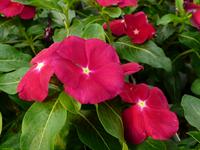
What Is In The News On Periwinkle
Vinca- periwinkle has roller coaster history
I do find the history of a plant to help me understand how the planed got to the USA and how I can learn from it's history.
One of the most popular warm-season annual bedding plants is vinca or periwinkle. It is well-known for its prolific and long blooming season.
The plant is heat- and drought-tolerant. It thrives under our Louisiana growing conditions. The vinca we use as a bedding plant is Catharanthus roseus.
Thirty years ago periwinkle flower colors were limited to white. White with a red eye and a rosy purple. Breeding work in the 1980s involved crossing Catharanthus roseus with other species to improve the color range and increase blooming, increase flower size and improve the growth habit.
The results have been spectacular. Periwinkles now come in pink, deep rose, red, scarlet, white, white with a red eye, lavender blue, peach, apricot, orchid, burgundy and many other shades. Periwinkles generally grow from 10 to 18 inches tall with a spread of about 1 foot although trailing types spread to about 2 feet.
Unfortunately since all of these improvements have been made this once totally reliable plant has developed a serious disease problem. This disease can be so devastating to landscape plantings that many gardeners and professionals are limiting the use of periwinkles or eliminating them completely from their gardens.
The culprit is a fungus called phytophthora, which has always been present in our soils. It is often responsible for root rots and crown rots, and it attacks many types of plants. The attacks on periwinkles actually are to the stems of the above-ground portions of the plants. Dark brown streaks or blotches appear on the stems followed by the wilting of the leaves on those stems. Often, sections of the plant wilt and turn brown while other parts remain healthy. A severe attack can essentially wipe out an entire planting. We call this disease aerial blight.
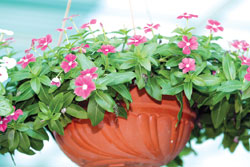
As A Potted Plant
I have made a few periwinkle potted plants again make sure it's not going to get to much west sun in the summer time.
Periwinkle (Catharanthus roseus) is a sun-loving plant.
However, it can be kept indoors at the balcony where sunlight is abundant.
Periwinkle produces many flowers which could be purple, pink or white.
Best displayed in a hanging pot.
Water daily.
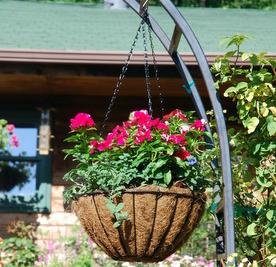
Plant That Thrive During Oklahoma Summers
Madagascar Periwinkles
If you live were it gets very hot make sure to make the plant has a soil that holds the water, Yes periwinkle likes heat but not great if it's a very dry heat needs more water.
Because the temperatures in Oklahoma gardens have topped one hundred degrees for several days in a row and gardeners have asked which plants do best in the heat? A summer series profiling those plants with the most heat resistance debuts this week. With waterand most established plants will survive hot summer temperatures.
Love the hot sun and hail from Madagascar on the southeastern coast of Aftrica. Catharanthus roseus may also be listed in some literature as Vinca rosea, Ammocallis rosea, and Lochnera rosea because it was formerly classified as such.
Other common names include rose periwinkle and cape periwinkle. It is not a true periwinkle but is instead related to the dogbane family. Madagascar periwinkles are hardy to zones 9 - 11 where they grow into a semi-shrubby perennial. In Oklahoma and they remain a small but mighty annual which impacts the landscape with cheery nonstop color. They outperform many other annuals in hanging baskets and as a small edging plant for the herbaceous bed or border.
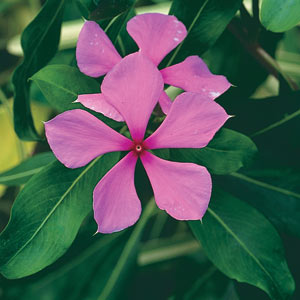
Soil Types
Each plant has a soil type , but if you don't have the wright soil if you can get periwinkle going you'll be good. I live with clay and rock and lot of oak leaves. I have plants just growing in oak leaves.
The Right Place
Common periwinkle, the hardier of the two types grows well over much of the United States (zones 4 to 9). It can tolerate cold winters below zero, even colder if protected by snow cover. Large periwinkle does best in warmer climes (zones 7 to 9) where winters temperature rarely dip below zero.
Locate periwinkle in a shady spot in well-drained soil. Plant it under shade trees or on the north sides of buildings in slightly acid to neutral soil (pH 6.0 to 7.0) with some organic matter mixed into it.
Before planting, cultivate the soil at least 12 inches deep. Periwinkle is easily transplanted from flats in either spring or fall. Gently separate the sprigs from one another, untangling and spreading their roots. Dig holes 3 to 4 inches deep and wide enough to hold their root systems. If transplants are in pots, make the planting holes large enough to easily accommodate the root ball. Place a plant in each hole making certain that the top of the root ball is at, and not below, ground level. Refill the hole with soil to the level of the surrounding ground and water thoroughly to provide good soil-to-root contact. Spaced 12 inches apart, they will cover the area by the end of the growing season.
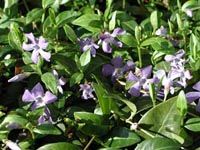
Plant of the Week
Bowles Vinca Minor, Periwinkle
I do find it nice to get news about two plants being taken and making a new plant. Just more for use to add to our yards.
Gardeners generally resist using Latin names, preferring instead the easier to pronounce and remember colloquial names attached to their favorite plants. But occasionally, a Latin name will cross over that divide and become the common name for a plant.
Two examples of this cross over come to mind. Aloe vera, the medicine plant, is both a Latin name and a common name as is Vinca minor, the common periwinkle. Both names are simple, easy to pronounce and seem to have become firmly established as a part of our vernacular lexicon.
Vinca minor, also called Periwinkle but not to be confused with the annual flower that goes by the same name, is a member of the dogbane family and is one of the most widely used evergreen ground covers for shaded gardens. Vinca minor is a mat-forming plant with trailing stems that can reach 2 feet long before rooting down. It seldom exceeds 6 inches in height and stays put on the ground, lacking any ability to climb. The 1 ½ inch long, opposite leaves are a dark, glossy blue-green. In March, lilac-blue, tubular five-petaled flowers appear.
In Home and Garden then just look under plant of the week for bowles Vinca Minor, Periwinkle.
Periwinkle

Varieties Of Periwinkle
One of the most popular warm-season annual bedding plants is vinca or periwinkle. It is well-known for its prolific and long blooming season.
The plant is heat- and drought-tolerant. It thrives under our Louisiana growing conditions. The vinca we use as a bedding plant is Catharanthus roseus.
Thirty years ago, periwinkle flower colors were limited to white, white with a red eye and a rosy purple. Breeding work in the 1980s involved crossing Catharanthus roseus with other species to improve the color range, increase blooming, increase flower size and improve the growth habit.
The results have been spectacular. Periwinkles now come in pink, deep rose, red, scarlet, white, white with a red eye, lavender blue, peach, apricot, orchid, burgundy and many other shades. Periwinkles generally grow from 10 to 18 inches tall with a spread of about 1 foot, although trailing types spread to about 2 feet.
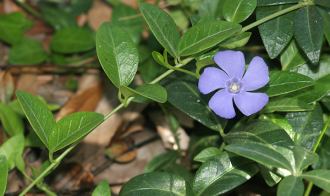
How To Plant
Periwinkles will grow in full sun, but they prefer light or partial shade. Good, well-drained garden soil is best. Note: This plant is invasive in some regions.
Vinca or Periwinkle will grow in range of light conditions, from full sun to shade. They will do well in average soils. They are both heat and drought tolerant. This makes Vinca ideal in hot, dry parts of the country where other flowers will wither and wilt.
Space plants 12-15 inches apart. Water well, when planting. Once plants are established, water only during extended droughts.
Add a general purpose fertilizer once or twice a season.
Mulch around plants in dry areas to help retain soil moisture.
Vinca major (also known as big leaf periwinkle) is an ideal ground cover for mountain areas of moderate climate, such as in southern California (20 deg F to 90 deg F). It is fire retardant and relatively drought resistant. It will grow thick enough to mitigate erosion on hillsides and is invasive enough to choke out undesirable grass/brush, but not too invasive to control. It grows very well in shaded to semi-shaded areas without irrigation, and will grow fine in direct sunlight if watered occasionally (though may wilt in temperatures above 85 deg F).
It goes dormant in the winter and will "lie down" after a freeze, but will not die even when covered with snow for an extended period.
It will return up to 18 in. tall by the beginning of summer, then slow down as the temperatures increase.
With the exception of boundary control where necessary and light watering when desired, Vinca major requires absolutely no maintenance, and will thrive even at elevations over 6000 ft.
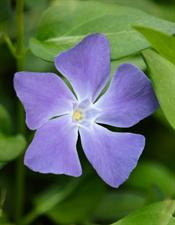
Purple Periwinkles Battle Inflammatory Diseases
From University of Rochester Medical Center
A widely and safely used plant extract acts as a novel anti-inflammatory agent that may one day be used for the treatment of chronic obstructive pulmonary disease, or COPD, as well as other inflammatory conditions. There is an urgent need for new therapies for the treatment of chronic inflammatory diseases, such as COPD, otitis media (ear infection), and atherosclerosis (chronic inflammation in the walls of arteries), because the most effective and commonly used agents – steroids – often cause serious side effects, such as liver damage, which prevent long-term use.
In a study published today in the Proceedings of the National Academy of Sciences, researchers at the University of Rochester Medical Center were the first to find that vinpocetine, a natural product derived from the periwinkle plant, acts as a potent anti-inflammatory agent when tested in a mouse model of lung inflammation, as well as several other types of human cells. Results of the study show that vinpocetine greatly reduces inflammation, and, unlike steroids, does not cause severe side effects.
In addition to Li, Yan and Berk, Kye-Im Jeon, Ph.D., Xiangbin Xu, Ph.D., Jae Hyang Lim, Ph.D., DVM, Hirofumi Jono, Ph.D., and Jun-ichi Abe, M.D., Ph.D., from the Aab Cardiovascular Research Institute and the Department of Microbiology and Immunology at the University of Rochester Medical Center participated in the study. Toru Aizawa, M.D., a former post-doctoral associate at the Aab Cardiovascular Research Institute, and Dong-Seok Kwon, Ph.D., a collaborator in Korea, also contributed to this study.
This does give use something to think about, but I would not take anything with my Doctor saying it was good.
Topics And Lenses You Might Enjoy - Have A Look At Some Of My Other Squidoo Lens.
Here are just a few of other lens on squidoo I have done. Take your time and enjoy looking around.
- Crystal Therapy: What's it all about
Master Instructor Crystal Awareness Institute, my name is Nara White Owl I have worked with crystals most of my life. When I was young I just liked the stone, it had a great feeling. - Pine Needle Baskets by Nara White Owl
I began making pine needle baskets with the simple statement 'I could never do that'.Hundreds of pine needle baskets later my simple statement has now become my obsession - I could never go long without making baskets. - HOT STONE MASSAGE - BENEFITS AND INSTRUCTION
The name 'Hot Stone Massage' comes from the use of smooth basalt stones that vary in size from about the size of a golf ball to the size of a computer mouse. - Hilary Stagg
I Was So Lucky To Meet Hilary StaggI was in Pasadena Ca. attending the Whole Life Expo in the late 80's, and over all the noise I could hear a Harp being played. After about an hour I found myself standing at a booth where Hilary Stagg was playing th - Hot Stone Therapy Video Showcase
Hot Stone Massage is a type of massage that uses water-treated stones, placed at specific sites on the client's body to promote relaxation and to help open up the meridians. - Energy Healing Techniques
This lens has been written and arranged to give you the fastest access to energy healing techniques. Each section discusses all the crystal healing with completes instructions for their use. Here you are going to find the 8 different energy healing
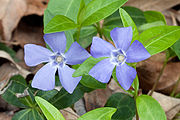
Medicinal Uses For Periwinkle
disclaimer-Periwinkle is potentially toxic and has been known to cause acute dyspnea.
ALWAYS SEE YOUR PHYSICIAN BEFORE TAKING
It was used as a folk remedy for diabetes in Europe for centuries.
In India, juice from the leaves was used to treat wasp stings.
In Hawaii, the plant was boiled to make a poultice to stop bleeding.
In China, it was used as an astringent, diuretic and cough remedy. In Central and South America, it was used as a homemade cold remedy to ease lung congestion and inflammation and sore throats.
Throughout the Caribbean, an extract from the flowers was used to make a solution to treat eye irritation and infections.
It also had a reputation as a magic plant; Europeans thought it could ward off evil spirits, and the French referred to it as "violet of the sorcerers."
Periwinkle alkaloids have been used in the treatment of leukemia, Hodgkin's disease, malignant lymphomas, neuroblastoma, Wilms tumor, Kaposi's sarcoma, mycosis fungoides, to improve cerebral blood flow, and treat high blood pressure.
Leaves (Lesser), aerial parts and root (Madagascar)
Madagascar Periwinkle's traditional use in the treatment of diabetes led to extensive investigation into its properties. Vincristine and vinblastine are two powerful anticancer agents and the most important medicinal compounds found in plants in the last forty years. Vincristine is a standard treatment for Hodgkin's Disease, and vinblastine is used for childhood leukemia.
Orally, Madagascar periwinkle is used for diabetes, cancer, as a cough remedy, for easing lung congestion, throat inflammation, and as a diuretic.
Topically, it is used as a hemostatic, for insect bites, wasp stings, eye irritation, infection, and inflammation.
Modern Medicinal Uses
In the 1950s researchers began to study the plant after learning that a tea made from periwinkle was being used to treat diabetes in Jamaica. They found that Madagascar periwinkle contains two anticancer alkaloids-vincristine and vinblastine-that inhibit the growth of tumors. Vincristine is most effective in treating childhood leukemia. Vinblastine is used in treating testicular cancer and Hodgkin's disease (cancer of the lymphatic system). The Madagascar periwinkle has been found to contain more than seventy known alkaloid agents, some of which are medically effective for reducing blood sugar levels and blood pressure.
ONCE AGAIN SEE YOUR PHYSICIAN BEFORE TAKING

